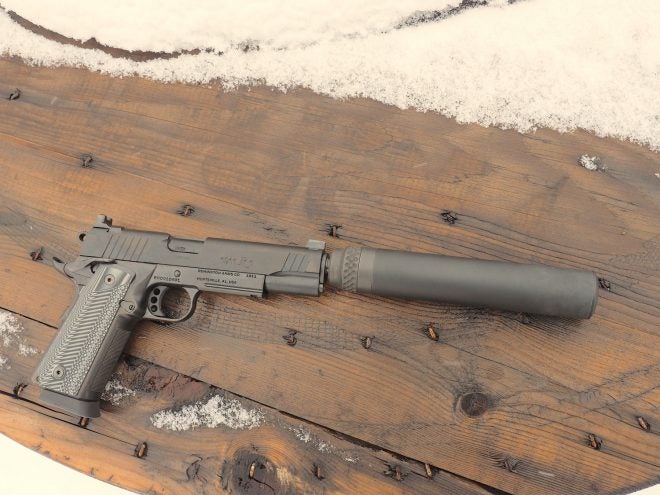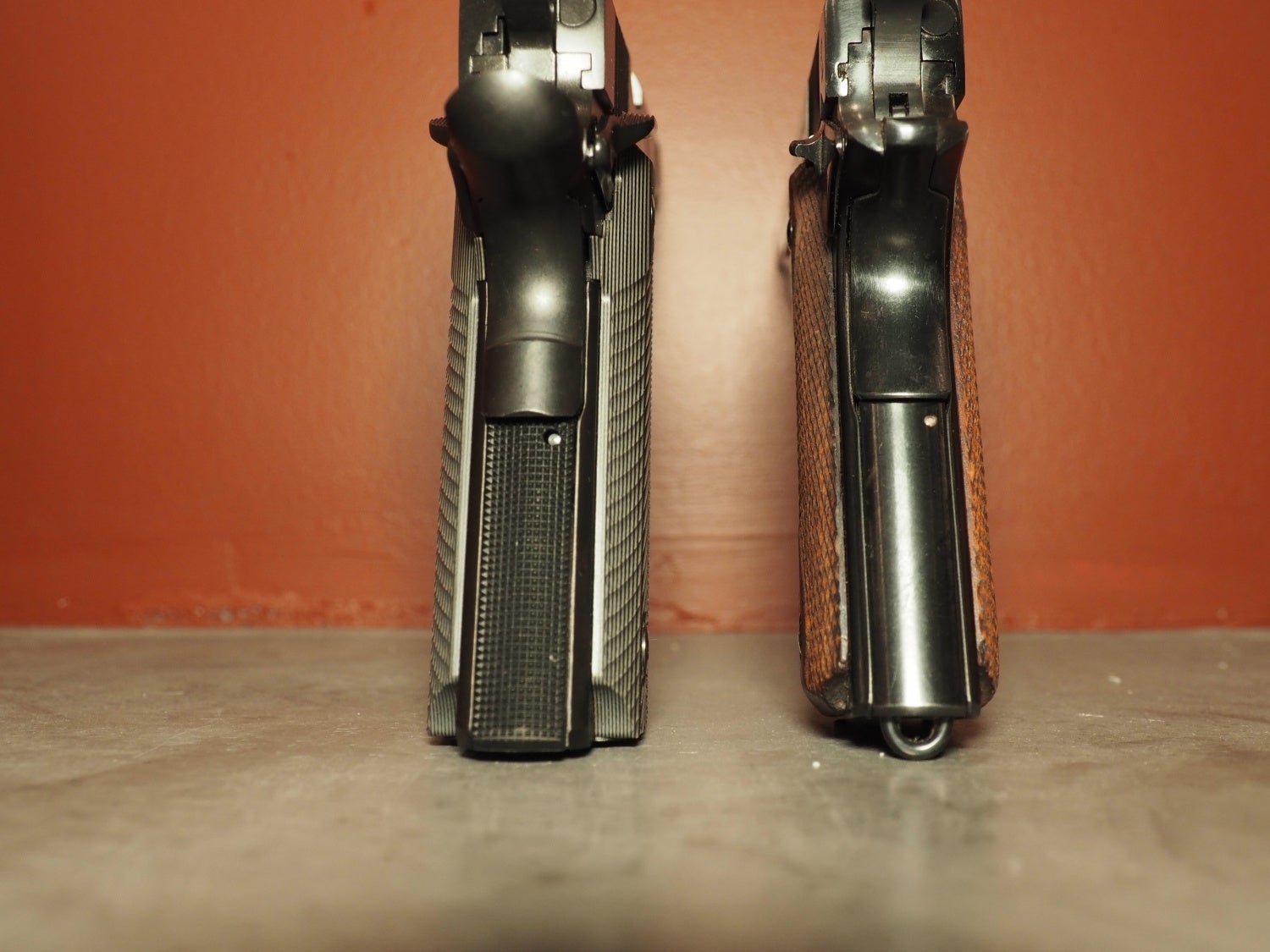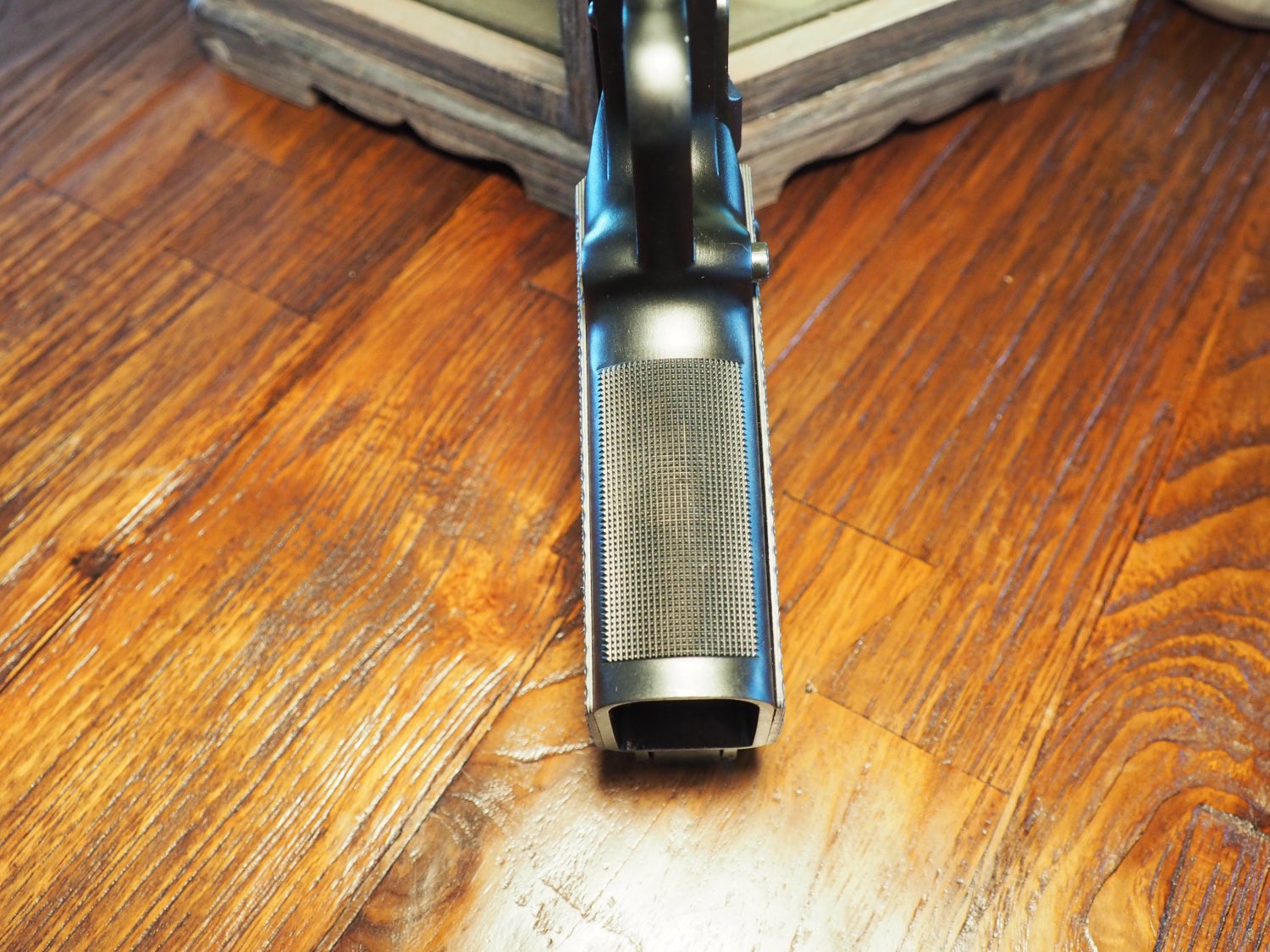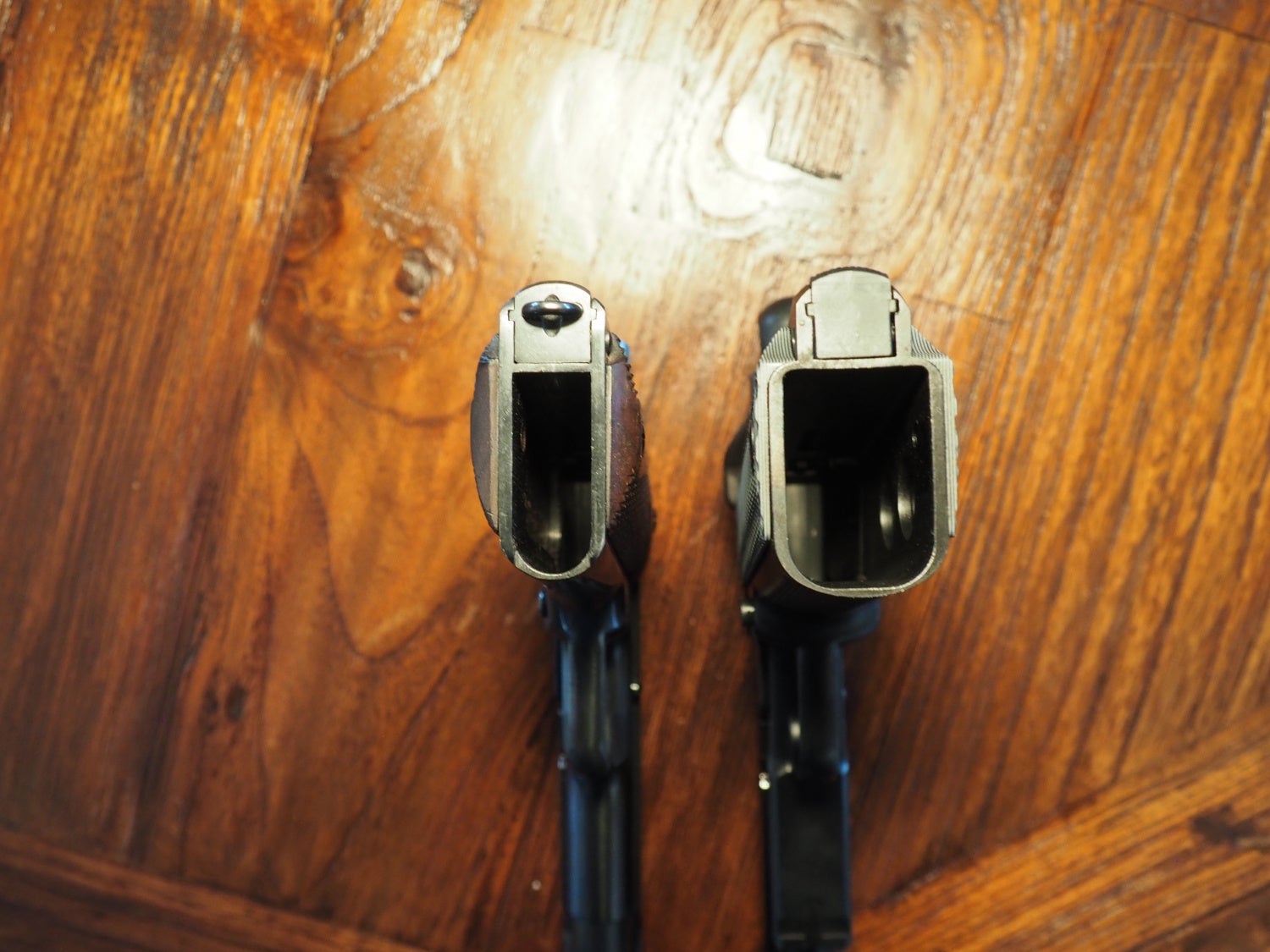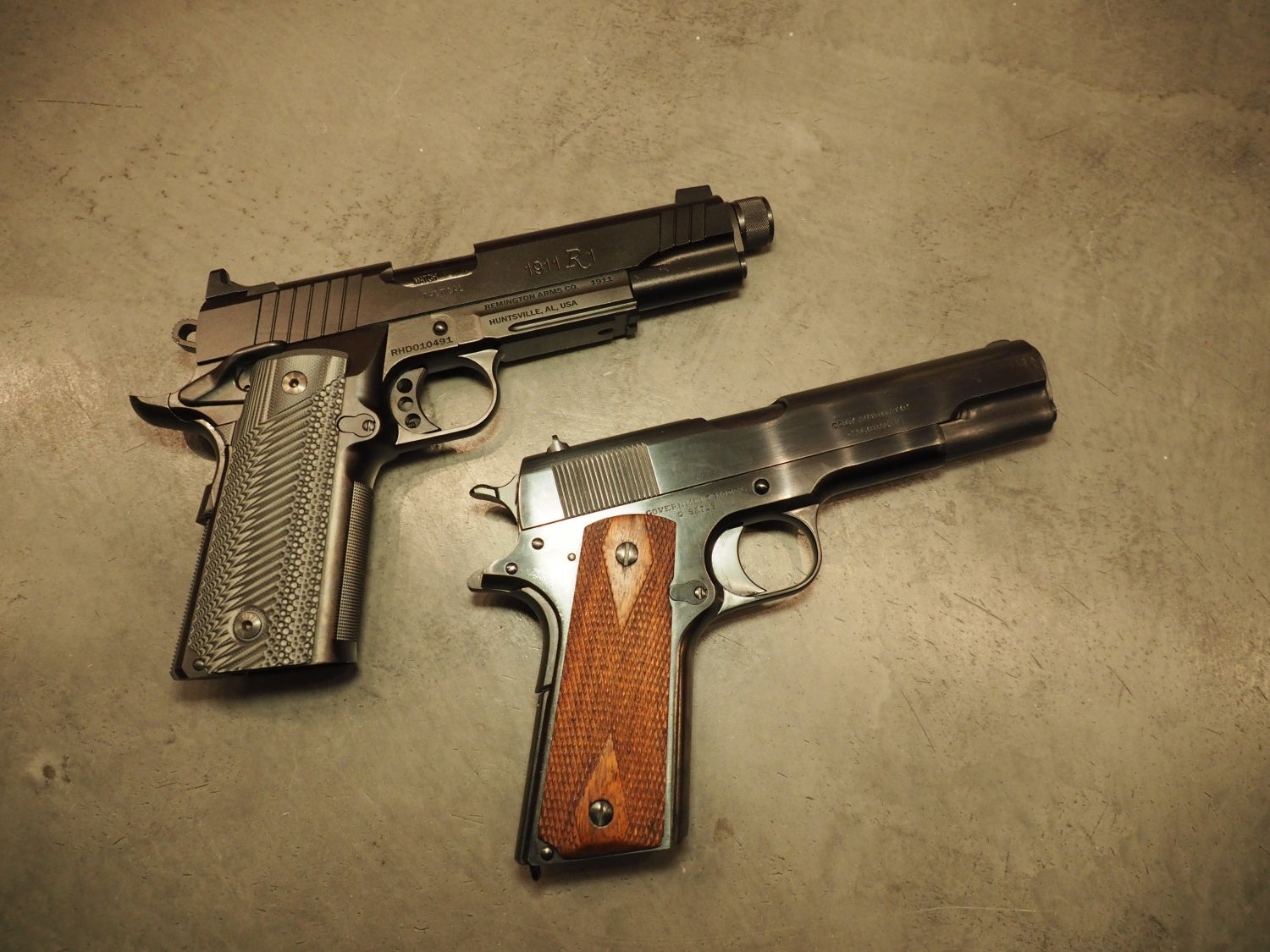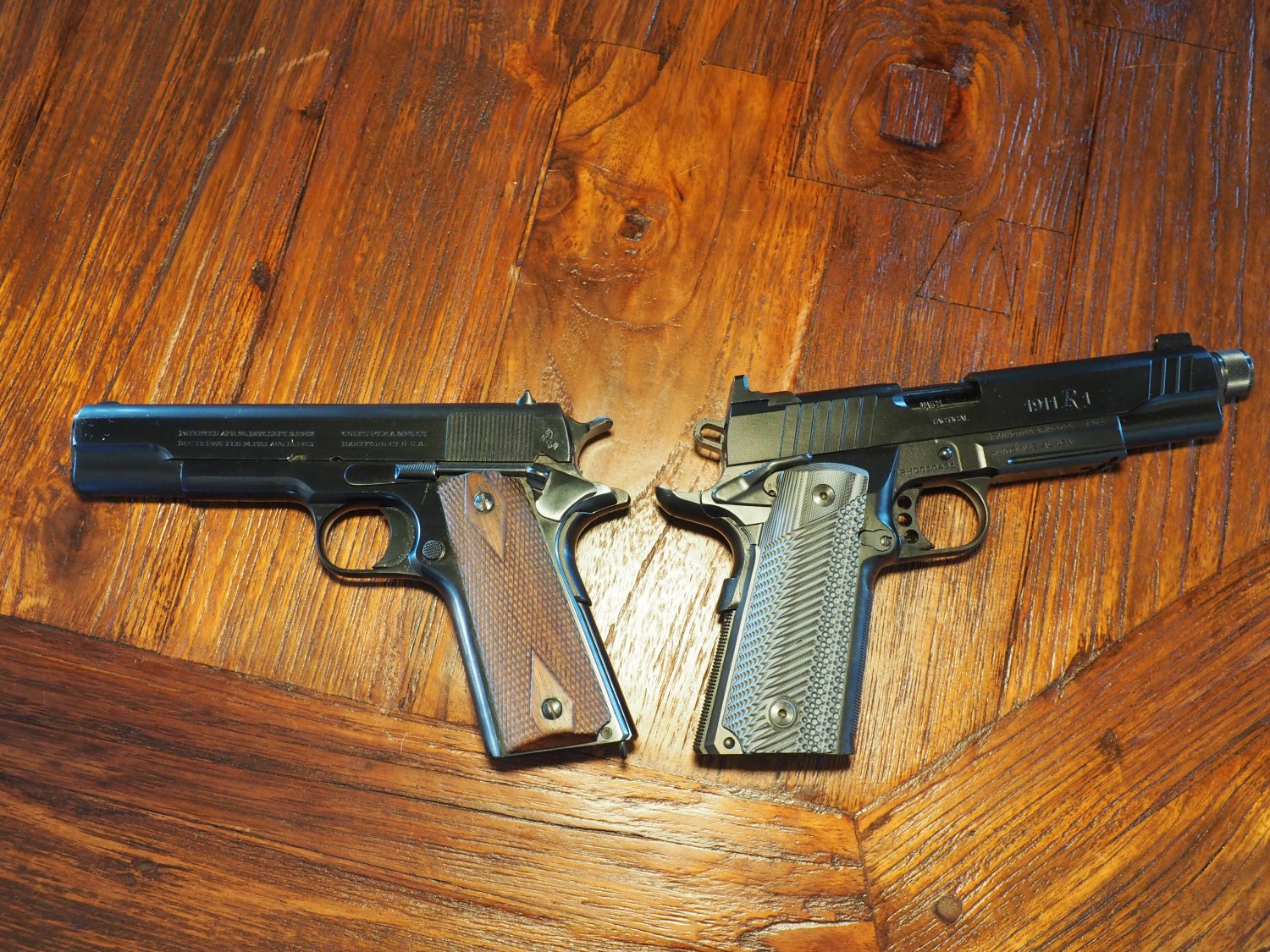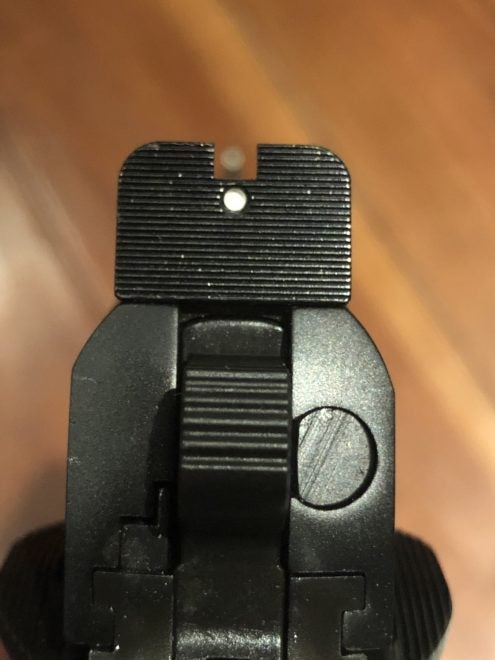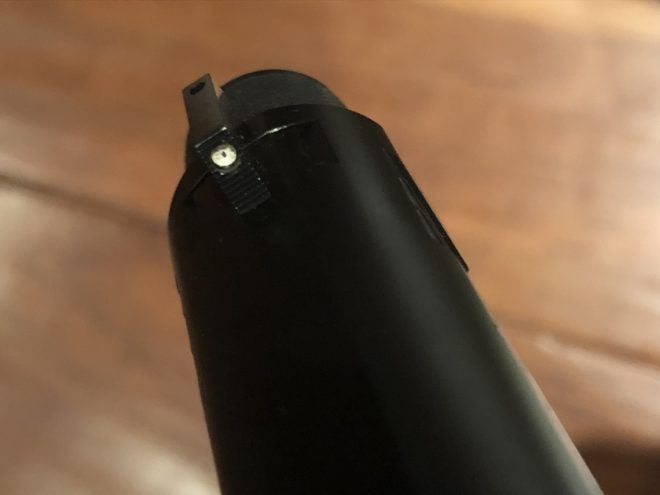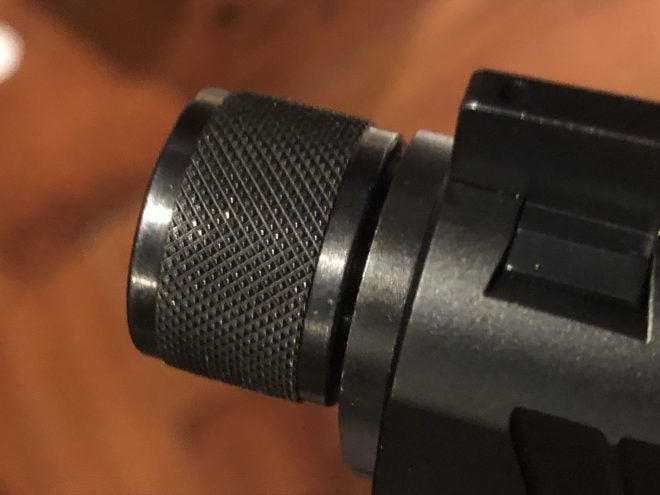Double the lead, half the noise
I’m no stranger to double stack 1911’s, as I used to carry a Para Warthog over a decade ago, and I’ve shot many competition configured STI’s. That Para Warthog went by the wayside years ago after I discovered improperly heat-treated parts (via them breaking while at the range).
Remington has recently jumped into the double stack 1911 arena with their R1 Double Stack line, with four different models. While some other manufacturers such as HK and FN offer factory threaded double stack .45s, I have not yet encountered a double stack 1911 that comes factory configured with a threaded barrel. Remington is offering this configuration with their 1911 R1 Tactical Double Stack Threaded. (That’s quite a mouthful of a model name, so for brevity’s sake I’ll refer to it as the R1 hereafter).
Initial impressions
The R1 comes in a green Remington cardboard box with a foam cut insert. It comes with two 15 round magazines and wears grey G10 “operator grips” from VZ. Though the R1’s magwell is cavernous compared to a single stack 1911, the grips are very slim. This enables the grip width in the rear to be only 1/10th of an inch wider than a single stack, 1.356″ vs 1.26″. The major width difference is felt in the front strap, which feels similar in width to a G20 or FNX45. Those of us with larger hands won’t have any issues, however.
- L: R1 Double Stack R: 1911
- Thick front strap of the R1 double stack
- single vs double stack well
- R1 double stack vs 1911
This particular R1 comes ready to go out of the box with suppressor height sights. This is a nice feature that should absolutely be included on factory threaded handguns. The sights are vertical “straight 8” configuration of one white dot in the rear and one white dot in front. While they are reasonably quick to acquire in the daytime and easily cleared my suppressor, they’re not very useful at night or in low light. I also strongly believe a bright orange or green larger front sight dot would allow for better contrast and quicker acquisition. Low light capability is accomplished via a single slot light rail that can accommodate any number of lights or lasers.
- rear sight
- front sight
- Thread protector
(Author’s note: though some early review models, as well as Remington’s own early specs/literature on this model listed the sights as having Tritium inserts, this is no longer the case.)
Right out of the box, the biggest facet of the R1 that I noticed was how easy it was to rack the slide. While not “loose” feeling, the factory recoil spring is light enough to facilitate easy one-hand racking off of a belt or waistband. The ambidextrous safety felt crisp and precise, and the trigger was quite nice as well. Adjustable from 3.5-5 lbs, mine averaged 4 lbs. The pull was very crisp and the reset was short and nicely tactile.
The magazines inserted precisely and dropped freely, both empty and fully loaded. My only minor quibble was that, like many double stack .45 magazines, the last 3 rounds were rather difficult to load into the magazine.
Specs:
- Caliber: .45 Auto
- Capacity: 15+1
- Barrel: 5.5″
- Width: 1.4″
- Length: 9″
- Ambidextrous Safety
- Single slot light rail
- Height: 5.75″
- Trigger: Adjustable, 3.5-5lb
- Finish: PVD
- Grips: Grey G10
- Empty weight: 41oz
- MSRP: $1299
- Sights: Suppressor height straight 8 white dot
Range time
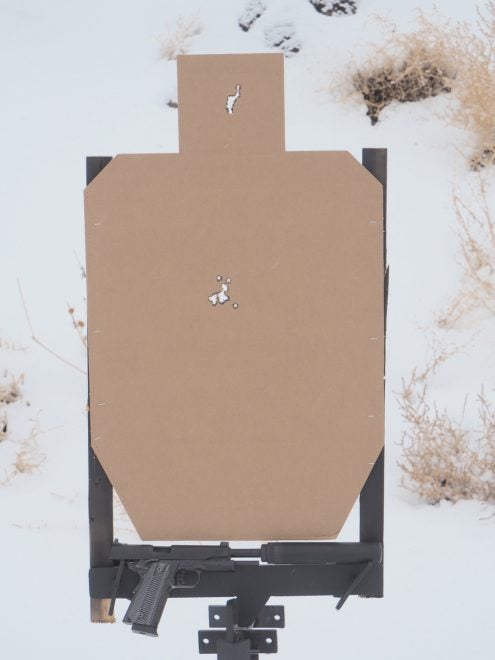
16 Rounds rapid fire into the head box and torso of an IPSC target at 10y.
I headed out to the range with the R1 and quite a bit of .45 ammo, as well as a few other threaded double stack .45’s to compare it to. Starting unsuppressed, I fired 8 different loads from the R1 both single handed and supported, weak and strong hand. All loads including semi-wadcutters functioned flawlessly, even when I intentionally limp wristed the gun. I then mounted a Gemtech Blackslide suppressor on the pistol, and it continued to perform flawlessly with all loads.
The R1 has a lot of mass at 2.56 lbs empty, even more so when loaded. This mass aids greatly in stability. Firing stationary from 5-25 yards and while advancing and retreating, the R1’s heft helped me keep all shots in the A zones on IPSC targets. Due to the suppressor height sights, there was a bit of a vertical offset at 25 yards and in. Like any firearm and sight combination, that’s all part of knowing your offsets at different ranges with different loads.
Where the R1 really shined was longer range targets. Firing suppressed and unsuppressed at 50, 100, and 150 yards resulted in a satisfying “ping”. The R1 is one of few pistols that I can easily achieve a full magazine of hits on a 100y silhouette. It is a very stable platform with a very good trigger, and the suppressor height sights are pretty much dead on at 50y. This negates the need for huge holdovers at 100 and 150 yards.
Accuracy Testing and Results
After a few hundred rounds, I conducted accuracy testing with all of the loads.
Accuracy was tested @ 15y braced on a barrier, unsuppressed. 5 shot groups, measured center-center:
Black Hills 200gr SWC: 1.18″
Black Hills 230gr FMJ: 1.86″
Black Hills Remanufactured 230gr FMJ: 1.17″
Remington Golden Saber 230gr HP: 1.28″
Federal 230gr JHP Hydra Shok: 2.24″
Federal 230gr FMJ: 1.52″
UMC 230gr JHP: 1.82:
Winchester Whitebox 230gr FMJ: 1.44″
Accuracy was very good across the board for a non-custom 1911.
Double Trouble
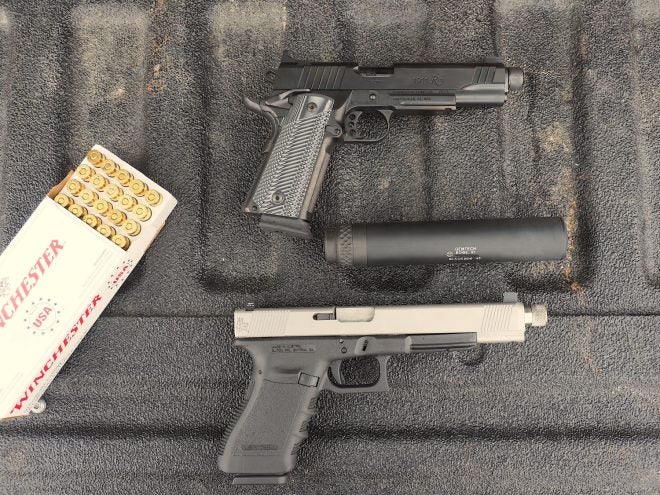
1911 R1 vs Glock 20 with Lone Wolf 21 Longslide
Finally, I shot the R1 side by side with a few other threaded double stack .45’s, namely the Glock 20 with an aftermarket .45 cal Lone Wolf long slide, an HK45, and an HK USP45CT. I compared all pistols suppressed and unsuppressed. Perhaps it’s from years of shooting the 1911 platform competitively, but I achieved better results with the R1 and found it more “shootable” in a number of defensive drills than the other pistols.
Further cementing my belief in the R1’s reliability, it handled over 600 rounds without cleaning with zero malfunctions. This is pretty good for a pistol that saw over 200 of those rounds fired suppressed.
Qui Bono?
So who benefits from the 1911 Tactical Double Stack Threaded? It is too large to “fit the box” for most competitive purposes, too heavy and bulky for concealed carry in anything but a winter coat, and requires a light/laser for proper nocturnal use. In this author’s estimation, the best purpose for the R1 is as a dedicated home/RV defense handgun for those who don’t have the space to conceal a suppressed long gun near their bed. Equipped with a light/laser, it would be a potent, reliable, and accurate pistol to have on hand. There would be an added benefit of it being easy on the ears if fired indoors when properly suppressed.
Objectively, the R1 functioned well with a wide range of ammo both suppressed and unsuppressed, and can achieve reasonable accuracy with a wide range of ammunition. Subjectively, this author found it a very stable platform for both short and medium range shooting, with a very nice trigger. It’s also a good value at $1,299 MRSP compared to other pistols with similar feature sets. If you’re looking for a pistol that is a good .45 caliber suppressor host, this particular R1 may be for you.
Pros:
- Easy to manipulate slide
- Precise controls/trigger
- Very stable
- Reliable and reasonably accurate across a wide range of ammo
- Suppressor height sights
Cons:
- Heavy
- Bulky, may not be the best choice if your glove size isn’t L or XL.
- Sights aren’t ideal, lack tritium or contrasting colors and require either charging the sights or adding a light/laser for low/no light usage.
For more information, please visit Remington
Thanks to HSS Idaho for range time and logistic support
 Your Privacy Choices
Your Privacy Choices
